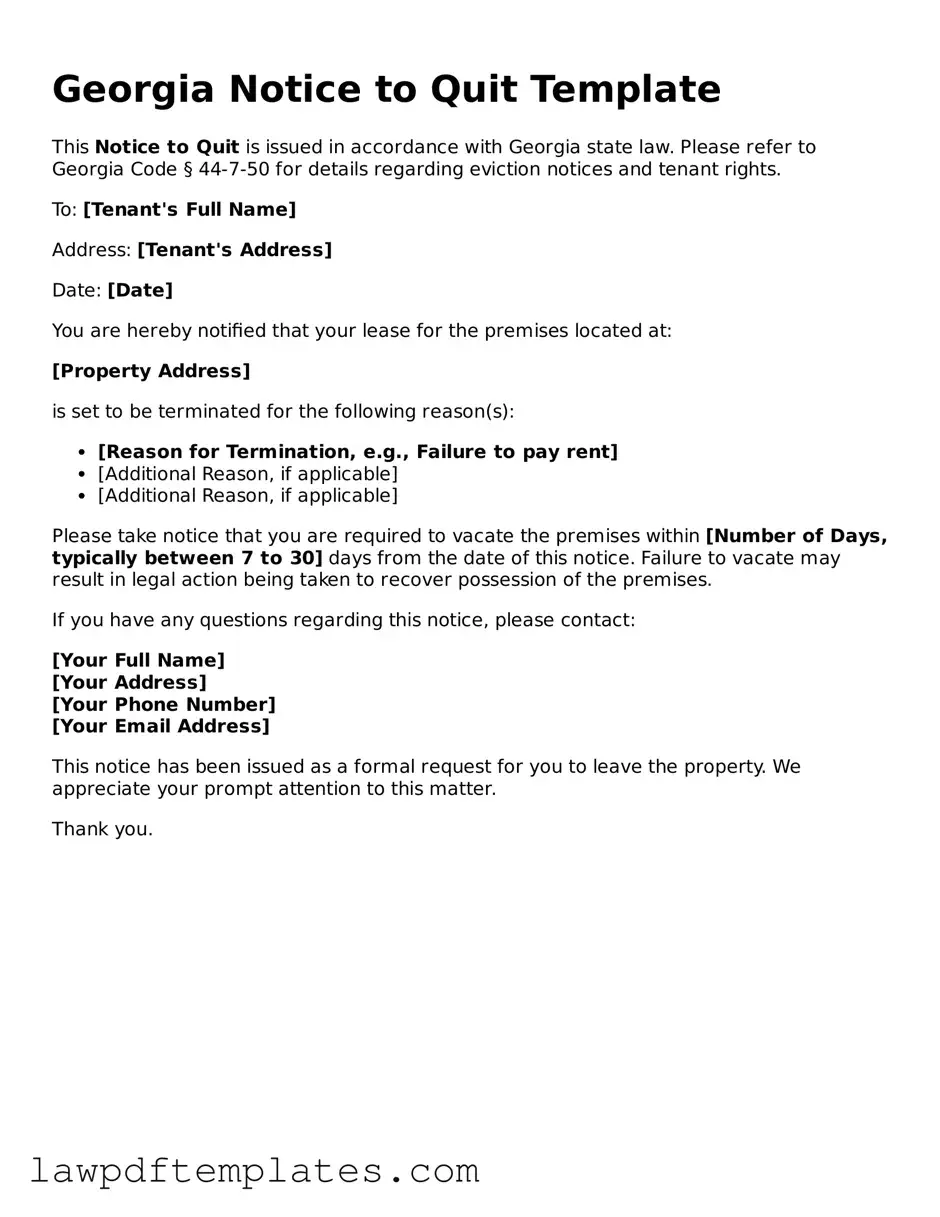Free Notice to Quit Template for the State of Georgia
The Georgia Notice to Quit form is a legal document that landlords use to inform tenants of their intent to terminate a lease agreement. This form outlines the reasons for eviction and provides the tenant with a specified timeframe to vacate the property. Understanding this process is crucial for both landlords and tenants to ensure compliance with state laws.
If you need to fill out the Georgia Notice to Quit form, please click the button below.
Get My Notice to Quit
